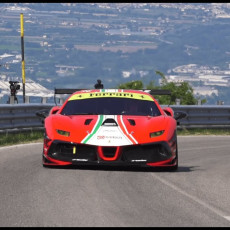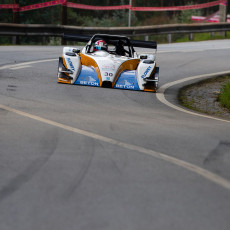
European Hill Climb Championship
FIA European Hill Climb Championship
It is an extremely intense race for the driver, albeit a short one – a race against time on a narrow, winding road with an average length of between 5 and 7km.
The driver is very much alone here – and his concentration is paramount, as well as his confidence in his vehicle and his knowledge of the snaking asphalt track. The slightest hesitation can seriously affect overall performance, as the timer seems to tick away quicker than elsewhere in this type of racing. Here, race strategy is clear-cut – a “maximum attack” approach is required from the very first to the last centimetre of the route, as for an athlete running the 100 metres.
Hill-climb offers authentic charm, with its natural setting, difficult roads, drivers who are truly driven, intrepid racing, finely honed engineering and proximity with the public.
Hill-climb is also a discipline with a rich history. The FIA European Hill-Climb Championship is the oldest of the FIA Championships still running today, all disciplines combined. Its first edition dates back to 1930.
It may have lost some of its former glory from the times when manufacturers such as Porsche, Ferrari or Abarth were directly involved, as well as Formula One drivers involved at the top of their game, but the European Championship remains a true institution. This is thanks to its legendary routes (the 17km at Trento-Bondone in Italy), its great classics (Ecce Homo, a Czech event over a century old), the breadth of its continental presence (from Portugal to Slovakia), its popularity (tens of thousands of spectators in Rechberg, Austria or in Falperra, Portugal) and, of course, its heroes such as Wolfgang Graf von Trips, Edgar Barth, Ludovico Scarfiotti, Mauro Nesti (with nine titles), the Alméras brothers, Francis Dosières, Anders Vilarinho, Christian Merli or the king of passes and summits, Simone Faggioli (title record holder) who won his eleventh title in 2019.

 Facebook
Facebook Twitter
Twitter


